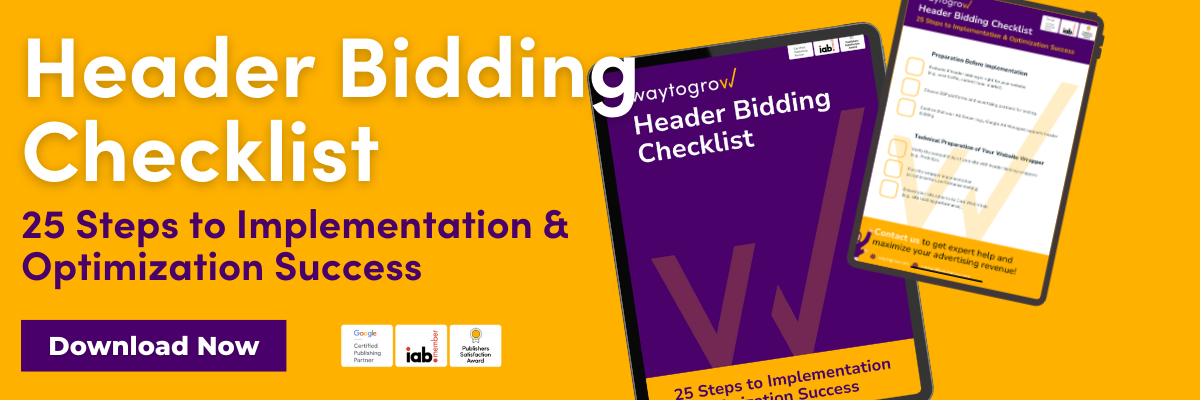Ad fill rate is a crucial performance indicator for publishers, reflecting the percentage of ad requests that are successfully filled with ads. Monitoring and analyzing key metrics related to ad fill rate allows publishers to optimize their inventory, maximize revenue, and improve the overall effectiveness of their advertising strategies. Here are some essential metrics to track for ad fill rate:

Ad Fill Rate
- Definition: The ad fill rate measures the percentage of ad impressions served compared to the total ad requests received. It is calculated using the formula:
- Importance: Very often higher fill rate indicates better inventory utilization, while a lower fill rate may suggest issues with demand, inventory quality, or pricing strategies.
Total Ad Requests
- Definition: Total ad requests refer to the number of times ad space is requested from the ad server. This metric includes all types of requests, regardless of whether they are ultimately filled with ads.
- Importance: Monitoring total ad requests helps publishers understand the overall demand for their inventory and identify trends in traffic and engagement.
Total Impressions Served
- Definition: Total impressions served represent the actual number of ads displayed to users. This metric is essential for calculating the fill rate.
- Importance: Tracking impressions served allows publishers to evaluate how well their inventory is performing and identify opportunities for optimization.
CPM (Cost Per Mille)
- Definition: CPM is the cost an advertiser pays for every thousand impressions served. It is a key revenue metric that helps publishers understand the value of their ad inventory.
- Importance: Monitoring CPM alongside fill rate provides insights into how effectively inventory is monetized. High CPMs with low fill rates may indicate a need for more competitive pricing strategies.
Ad Quality Score
- Definition: The ad quality score assesses the relevance and performance of the ads displayed on a publisher’s site. This score may be influenced by user engagement metrics, such as click-through rates (CTR) and viewability.
- Importance: A high-quality score can lead to better ad placements and higher fill rates, as advertisers are more likely to bid for inventory that performs well.
Audience Segmentation Metrics
- Definition: These metrics refer to the analysis of the demographics, interests, and behaviors of a publisher’s audience. Understanding the audience helps publishers optimize inventory allocation and pricing strategies.
- Importance: Tracking audience segmentation metrics enables publishers to tailor their ad offerings to match advertiser demand, improving both fill rates and CPMs.
Geographical Performance
- Definition: This metric analyzes the performance of ad inventory based on geographic locations. It identifies which regions are generating higher fill rates and CPMs.
- Importance: Understanding geographical performance helps publishers target their inventory more effectively and optimize campaigns for specific regions, potentially increasing overall fill rates.
Ad Format Performance
- Definition: This metric tracks the performance of different ad formats (e.g., display, video, native) across the publisher’s inventory.
- Importance: Analyzing ad format performance helps publishers identify which formats generate higher fill rates and engagement, enabling them to optimize their inventory for better results.
Revenue per User
- Definition: Revenue per user measures the average revenue generated from each user visiting the publisher’s site. It can be calculated by dividing total revenue by the number of unique users.
- Importance: Tracking revenue per user alongside fill rates provides insight into how effectively inventory is being monetized relative to user engagement.
Programmatic vs. Direct Sales Performance
- Definition: This metric compares the fill rates and CPMs achieved through programmatic sales versus direct sales relationships.
- Importance: Understanding the differences in performance helps publishers strategize their inventory allocation, optimizing both programmatic and direct sales efforts for improved overall fill rates.
Share on:











